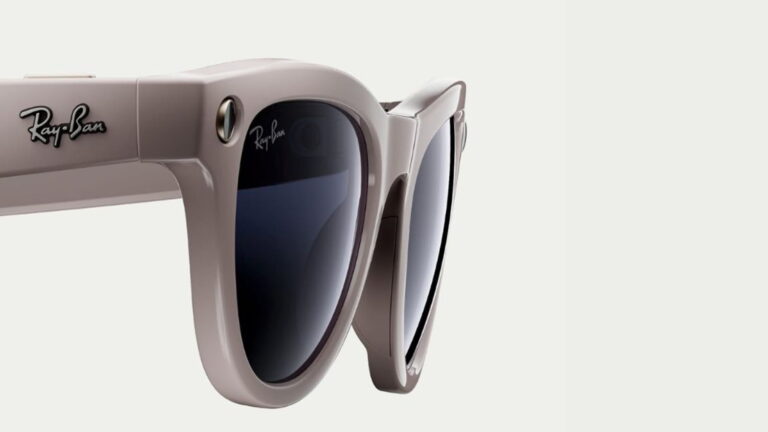
Meta announced Q2 earnings yesterday, including $47.5 billion in revenue, up 22 percent year-over-year. The breakout performance was driven by AI-fueled ad targeting. Initially a workaround to iOS privacy restrictions, this is now Meta’s primary play and value driver.
Resting under those high-level Q2 results, Meta Reality Labs’ (MRL) revenue was $370 million. This was up 5 percent year-over-year, and down 10 percent quarter-over-quarter. The former is the more apples-to-apples metric, considering cyclical patterns in a given year (e.g., holidays).
MRL growth was primarily driven by Ray-Ban Meta Smartglasses (RBMS), which we know tripled in year-over-year sales, as revealed in Essilor Luxottica’s earnings disclosures this week. The bad news is that Quest headset sales are down year-over-year, offsetting RBMS growth.
There’s much to say about all these dynamics (more on that in a bit). But our main question is how Q2 revenue translates to hardware unit sales. This is an exercise we’ve done every quarter for several years (see last quarter), which helps inform broader VR momentum and market sizing.
Reverse Engineering
Diving in, MRL’s top-line revenue was $370 million in Q2, as noted. As done in the past, we can use this to reverse-engineer unit sales. This exercise gets harder every year due to more revenue sources. It’s not just one flagship Quest headset anymore… but several devices in the mix.
To that end, we’ve estimated Meta Reality Labs’ revenue share breakdowns based on several signals we’re tracking. You can see those estimates below (in dollars, not units). In this hardware-centric exercise, we’ll focus on the last three bullets, which account for 80 percent of revenue.
- VR software (game & app sales): 18 percent*
- First-party accessories (head straps, etc): 2 percent
- Quest 3: 29 percent
- Quest 3s: 24 percent
- Ray-Ban Meta Smart Glasses: 27 percent
Quest 3
Based on the above revenue shares, Quest 3’s estimated Q2 revenue was $107.3 million. Considering a Q2 average unit price of $499**, Meta sold an estimated 215,030 units during the quarter.
Quest 3s
Based on the above revenue shares, Quest 3s’ estimated Q2 revenue was $88.8 million. Considering a Q2 unit price of $329***, Meta sold an estimated 269,909 units during the quarter.
Ray-Ban Meta Smart Glasses
Based on the above revenue shares, RBMS estimated Q2 revenue was $99.9 million. Considering a Q2 unit price of $329 (and a revenue split with EssilorLuxottica), 605,455 units were sold during the quarter.
Grand Total
Adding up all devices, we get an estimated 1,090,393 units sold in Q2. Ray-Ban Metas have the highest unit sales, but Quest 3 has the highest dollar sales – the difference being a function of price.
So there you have it. Of course, much of this exercise is based on the above-estimated revenue shares across Meta Reality Labs’ commercial products. Those share estimates are educated but up for debate: anyone can adjust them and calculate accordingly using the above model.
*This figure represents the Oculus Store’s gross revenue, before developer payouts, which are usually 70 percent after taxes. Meta realizes 100 percent of revenue in some cases, such as first-party titles and releases from VR game studios it has acquired (e.g., Beat Games).
**During Q2 Quest 3’s 512GB model was priced at $499.99 – the single active price during the quarter.
***During Q2, Quest 3s’ 128GB base model was $299 while the 256GB model was $399. This averages out to $329 given weighted sales at the lower end.
Course Correct
Stepping back, Ray-Ban Metas are the growth engine, but offset to a degree by sales declines for Quest headsets. That offset is impactful due to price tags. In other words, unit sales fluctuations for Ray-Ban Metas have a smaller overall revenue impact than the costlier Quest 3.
But as an additional point of validation for the above estimates, they align with Essilor Luxottica’s revelation that RBMS tripled in year-over-year sales. It’s also notable that the above figures confer a lifetime total of 3.01 million RBMS units, which likewise squares with previous disclosures.
Meanwhile, one thing missing from all the above is Meta’s latest XR play, Oakley HSTN. And that’s for good reason, as sales of the device started in Q3. So we’ll get to see those results in three months. Based on early reviews and signs of traction, the sales impact could be meaningful.
Add it all up, and the headline is that non-display AI glasses are up while VR is down. Meta will continue to internalize these demand signals and course correct its road map accordingly. We’ve already heard rumors of delayed Quest 4 development to focus on smart glasses.
That not only includes non-display AI glasses but also flat-AR display glasses. Sitting between RBMS and Meta’s moonshot Orion, Project Hypernova involves lightweight AR glasses with a display system for simple graphics, notifications, and other utilities that are seen rather than heard.
Finally, the elephant in the room: MRL remains massively in the red with a $4.53 billion Q2 net loss. Most of that goes to R&D, so Meta’s message to the market is to have patience as it builds its business for the next decade rather than the next year – now with fewer m-word mentions.
